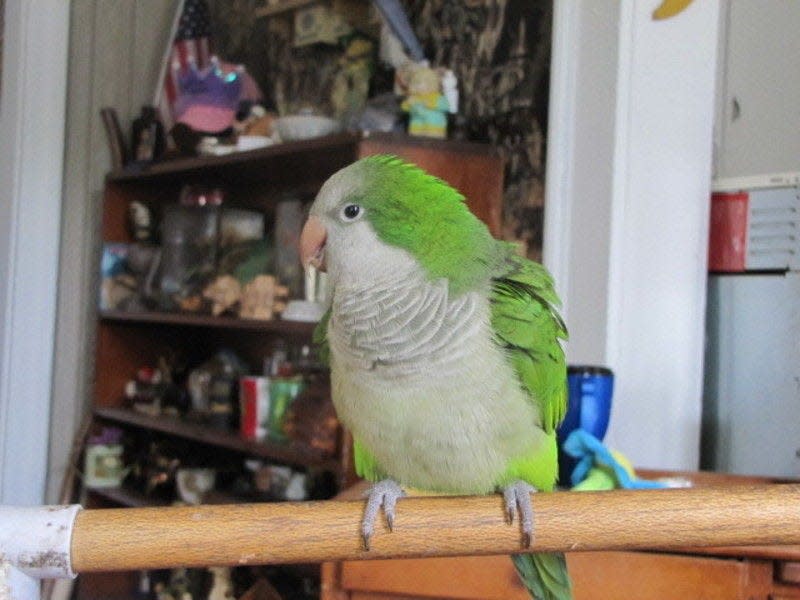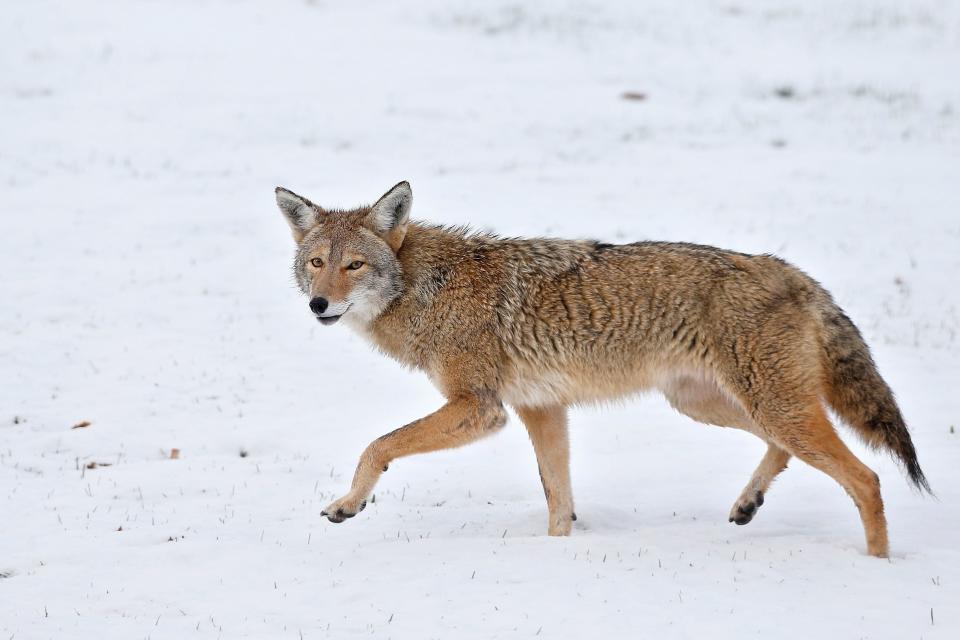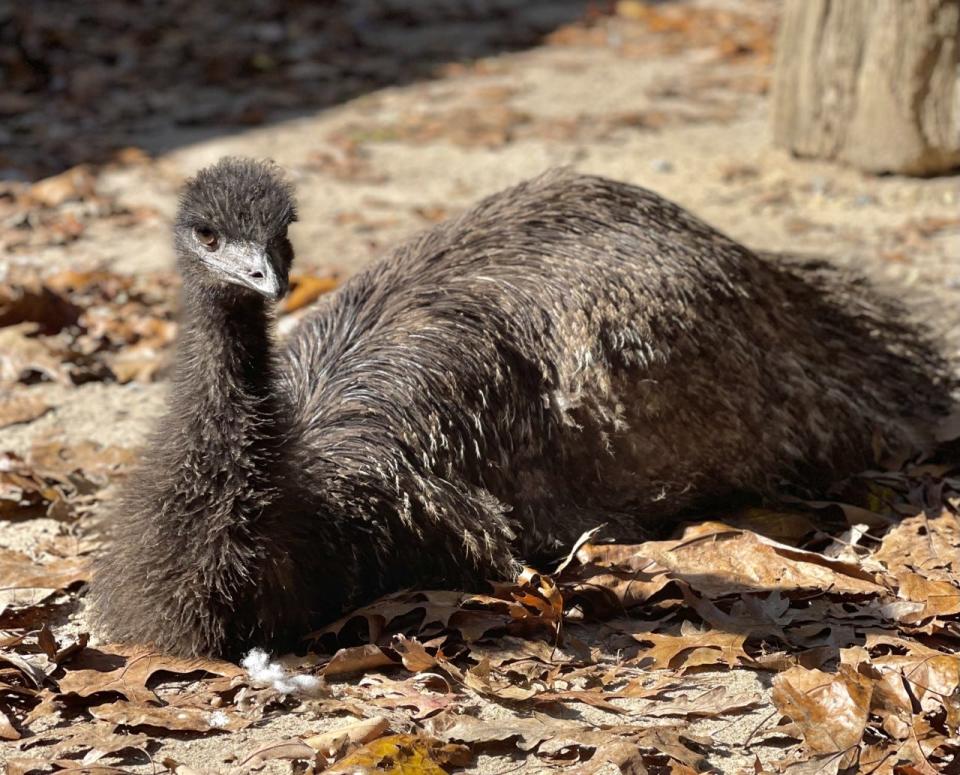Find out how likely you are to encounter a bear, snake or even an emu in New Jersey
Wildlife encounters in New Jersey can be quite a bit wilder than one would expect.
A 6-foot-tall flightless bird from Australia goes racing down the street. Colorful parrots flock to telephone poles in a Bergen County town. Coyotes roam the northern suburbs.
There are plenty of unexpected interactions between people and animals across the state. The more infamous encounters often earn places in New Jersey’s history — like the tale of the 1916 Matawan man-eater.
Matawan saw an inland shark attack following a series of them along the Jersey Shore. The 1916 attacks are often cited as influences for the “Jaws” movies franchise — but the majority of interactions between people and animals in New Jersey are thankfully harmless.
While the odd alligator or human-toothed fish can certainly stir up a good scare, shark, bear, and coyote attacks remain uncommon — but not impossible.
Here’s a look at some of the more interesting encounters between people and animals in the state — native, escaped, or otherwise.

Quaker Parrots of Edgewater
Looking to the skies in Edgewater may bring a strange sight — small, lime-green birds flitting among the trees and telephone wires.
Natives of Argentina now live in a wide variety of habitats in the state, monk parakeets, also known as Quaker parrots, have lived in Edgewater for more than 30 years.
The origin of the parrots is mostly a matter of speculation. The most accepted theory is that the birds escaped from a shipping crate in John F. Kennedy International Airport sometime in the late 1960s, and settled in Brooklyn before making the flight to Edgewater.
Though local enthusiasts are more than happy to see the birds — more than 4,700 people belong to a Facebook group called “Save the Wild Quaker Parrot of New Jersey” — the Department of Environmental Protection is less than thrilled.
The birds have the potential to become severe threats to agriculture and indigenous wildlife populations, according to DEP guidelines. Despite a proposed bill to remove the birds from the list in 2020, the birds still remain a “potentially dangerous species,” according to the DEP.
Public Service Electric and Gas has begun to crack down on the parrots, who flock to the heat generated by utility poles. When the birds build nests too close to electrical equipment, they can cause power outages, or even fires.
Bug off: They're back in New Jersey! What kills spotted lanternflies and what keeps them away?
In Edgewater, PSEG removes the parrots’ nests from poles twice a year — but for such a small bird, it’s no easy task. The nests can be more than five-feet wide, and usually consist of several compartments for a number of nesting pairs. Some nests can grow up to 10-feet in diameter, and weigh hundreds of pounds.
As of late, PSEG has been working with local groups and volunteers to minimize disruptions to the flock’s breeding season — but the parrots continue to be a strange enemy for the utility company.

New Jersey Coyotes
One of the state’s oldest residents, and a bane to farmers and small pet owners everywhere, the eastern coyote is hardly an uncommon sight.
To date, coyotes have been documented in all 21 counties. Though their highest concentrations are in the northwestern counties and the Pine Barrens, coyotes have been seen on the street everywhere, from Hoboken to Jersey City and beyond.
Reports of coyotes have increased significantly since 1980, and their range appears to be growing.
Although coyotes are naturally scared of people, their behavior can change radically when given access to human food and garbage, according to the DEP. Coyotes, while not typically aggressive, may approach people for handouts — and attack — if they have become too accustomed to people.
Officials are warning people to stay alert, after recent sightings of aggressive coyotes, and an incident where one bit a girl and her dog in an Essex County park.
In the U.S. and Canada, there are only two recorded instances of people being killed by coyotes: one in the 1980s and another in 2019.
The Humane Society urges people to never run away from a coyote. People are advised to scare the animal off with loud noises, rocks, or even just a well-placed blast from a garden hose.

Emu
In a state where most birds fly and stand much less than five feet tall, the emu tends to stick out.
Perhaps most famous for their run-wild escapades, the emus of New Jersey are usually escapees from rescues or farms.
Last year, Vance the emu made headlines for his mysterious disappearance — and his comical return. Tackled, tied up, and placed into a contractor-sized garbage can, it took more than a little effort to subdue the 6-foot-tall, 150-pound bird.
While Vance was an escapee from his owner’s animal sanctuary, many emus face a different fate. The birds are prized for their meat and oil — and North America plays host to a number of large-scale emu farming operations.
Officially designated as agricultural livestock, the DEP doesn’t require a permit for people to keep one.
Bears
Bear encounters have more than doubled this past year in New Jersey.
Residents in Berkeley reported a string of black bear sightings last January. In Wall, a black bear and her two cubs were spotted at a local park. The New Jersey Fish and Game Council even voted to approve the return of the state-sanctioned black bear hunt, following the sharp increase in sightings.
Though videos of bears rooting through garbage or playing rough on a porch often go viral, other encounters can quickly go wrong. In Annandale, a pair of dogs and their owner recently had a close encounter with a young black bear — the incidents seem to be happening more and more.
There were more than 1,753 bear encounters last year that caused damage or nuisance — more than three times the 562 encounters reported in 2021, according to records kept by the DEP.
The first five months of this year have seen 464 such encounters, compared to the 619 encounters in the same period last year.
Much of the increase comes from reports of bears breaking into garbage containers, attacking livestock, or just causing a general nuisance.
More serious encounters — those that jeopardize people and their pets — remain rare. There have been no unprovoked attacks on a dog so far this year, and only one attack on a human, according to the DEP.
Normally, black bear interactions are driven by hunger. Unsecured food, garbage, and bird feeders remain appealing targets for bears — including anything contaminated with food residue.
The DEP encourages residents to secure garbage to prevent bears from becoming a nuisance. Residents in areas frequented by bears are encouraged to avoid feeding birds and avoid leaving food outside.
In the event of a bear encounter, the DEP tells residents to remain calm and slowly back away. Be loud, look big, and stay together in a group if possible.
Oceanport Turkey Troubles
Though some people may say that they look better on a dinner plate, the wild turkey is all but here to stay.
Wild turkeys in New Jersey had virtually disappeared by the late 1970s due to industrialization and habitat destruction. In 1977, the Division of Fish and Wildlife stepped in and released 22 of the birds into the wild to combat the dwindling populations.
The restoration project was incredibly successful.
Now, there’s an estimated 20,000 to 23,000 wild turkeys in the state, according to the New Jersey Chapter of the National Wildlife Control Operators Association.
While the birds generally stick to the woods, there’s no absence of turkeys in the suburbs. During the spring breeding season, they’re prone to pecking at cars and their own reflections, or even charging at people.
Over the past few months, Oceanport has become especially familiar with turkey troubles, and some of the birds have become a beloved local menace.
Five of the birds bothered lawns, cars, and neighbors for a three-month period beginning in May. At the peak of the birds’ breeding season, there was “no shortage of Facebook and Instagram videos of cars being pecked at or charged into by turkeys,” according to Oceanport Mayor John “Jay” Coffey, II.
Borough officials installed two wild turkey signs, warning residents of the feathered beasts. Residents shooed them away from parked cars. Some of the birds even wandered directly into traffic — and the chaos only stopped when the male turkey of the group was relocated.
One of the turkeys, dubbed Bobby Gobblebucks by locals, was tragically struck and killed by a car.
There was a “beautiful memorial” put up in Gobblebucks’ memory, according to Coffey, complete with two bouquets of flowers and a hand-drawn sign. For about a week, the memorial stood at the corner of Branchport Avenue and the ironically named Port-au-Peck.
“People on Facebook will never forget that turkey,” Coffey said. “She’s a part of our culture, now.”
Snakes
While 22 snake species call New Jersey home, news stories about them tend to revolve around tales of escaped pets — ball pythons, boas, and racers, to name a few.
While the odd 60-pound snake is a rare occurrence — much like the 6-foot boa caught eating a seagull back in 2014 — wild snakes are no stranger to the spotlight.
In April, a wild 5-foot-long snake was rescued from a Deptford Township home by police. While the officers originally dubbed the snake “Death Noodle” in a Facebook post about the incident, they soon learned the snake was a harmless rat snake.
Rat snakes, though non-venomous, are commonly mistaken for rattlesnakes, according to the DEP. Among the largest snakes in New Jersey, they can grow anywhere from 3 feet to 7 feet long — but they’re rarely a danger to people, unless provoked.
So, the police tracked down the snake in question for a follow-up.
A second Facebook post by the department showed the snake, affectionately renamed “Julius Squeezer,” in a polka-dotted party hat.
“He may look dangerous, but he’s just a big, squirmy teddy bear,” the department wrote. “Hope this clears the air.”
This article originally appeared on Asbury Park Press: You are more likely than you think to encounter a bear, or snake in N.J.

